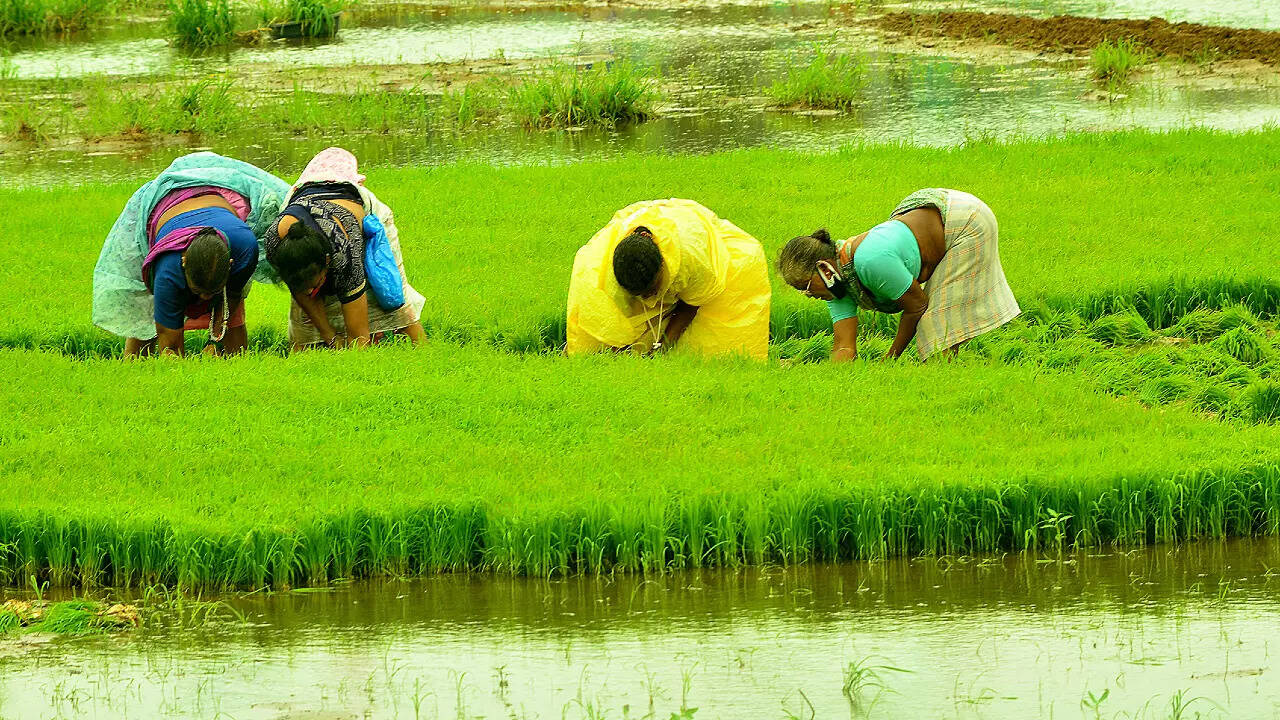
NEW DELHI: The latest report of nearly 5% fall in acreage of paddy due to poor monsoon rainfall in some northern and eastern states may become a big worry for the government. Amid this recent estimate and increase in prices of rice, the Centre has banned export of broken rice and also imposed a 20% export duty on non-basmati rice, except for the par-boiled, to discourage exports.
Even the sown areas under pulses presented a grim picture as it too declined by over 4% this year compared to last year. Acreage data of kharif (summer sown) crops, released by the agriculture ministry at the fag end of the current sowing season on Friday, shows overall decrease of 10 lakh hectares (LH) in sown of all crops put together, reporting a decline of nearly 1% over last year.
While paddy and pulses showed higher decline of 20 LH and 6 LH respectively, oilseeds reported a decline of over 1 LH (nearly 1%). Deficit is, however, bridged to an extent by the higher acreage of millets and cotton that showed an increase of nearly 8 LH (over 4%) and 9 LH (over 7%), respectively, over the last year’s figures.
Food secretary Sudhanshu Pandey said there has been “absolutely abnormal” rise in the shipment of broken rice — nearly 40 lakh tonnes in 2021-22, a sharp jump from 12 lakh tonne in 2018-19. China imported nearly 16 lakh tonne in the last financial year. The ministry also shared the details of how the export has increased by more than 42 times during April-August 2022 compared to same period in 2019.
Now, broken grains are not available in sufficient quantity for domestic animal feed and the ethanol blending programme.
"Cumulative monsoon rainfall deficit of 18% in east and northeast and 7% in northwest India (as on Friday) may be blamed for decline in acreage of paddy. But crop diversification towards millets and cash crop cotton too played a role. Focus on millets ahead of the 'International Year of Millets 2023' might have prompted farmers to go for coarse grains with hope of higher returns," said an official in the agriculture ministry.
As far as paddy is concerned, highest deficit of over 9 LH was reported from Jharkhand followed by Madhya Pradesh (6 LH), West Bengal (4 LH), Chhattisgarh (3 LH), Uttar Pradesh (2.5 LH) and Bihar (2 LH).
Though these deficits will lead to decline in rice output by 10-12 million tonnes, officials believe that it would not majorly impact the government procurement as Jharkhand, West Bengal and Bihar generally don't have much marketable surplus. "Decline in paddy acreage in Madhya Pradesh can be attributed to crop diversification," said an official.







